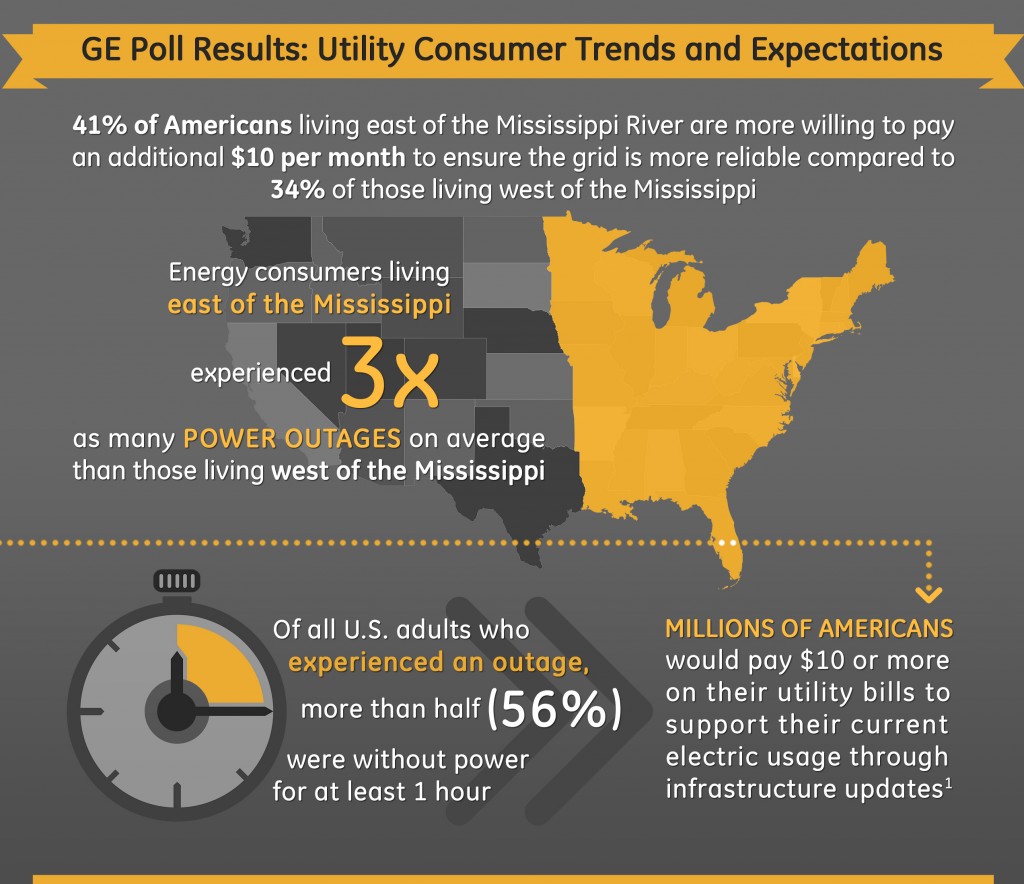No disrespect to GE, but how can it possibly be news that millions of Americans are willing to pay a little extra for more reliable electric service? That was, in fact, the headline on its press release last week touting the results of a recent consumer survey done for GE Digital Energy by the Harris Poll–Millions of Americans Willing to Pay $10 More on Monthly Bill for Reliable Grid.
Of course Americans are willing to pay for more reliable residential service, just ask the millions who work from home, either part-time or full-time. Going to the neighborhood coffee shop for its free wi-fi really isn’t the same as working out of your home office—trust me, I know.
Exactly how many folks work from home on a regular basis is somewhat of a mystery, with estimates all over the map given the different definitions used by researchers and polling firms. As Global Workplace Analytics, an independent research and consulting firm focused on emerging workplace issues and opportunities, explains on its web site: “…studying the work-at-home population is a little like trying to study meteoroids. We know there are a lot of them and we know they’re important, but we don’t know where they all are and not everyone agrees on which ones to count.”
Still, according to their research there are more than 3.2 million men and women on corporate and government payrolls—about 2.6 percent of the national total—that consider home their primary place of work. In addition, there are an estimated 13.3 million self-employed individuals in the workforce, 2.8 million of whom call home their principal business office. Clearly, for those 6 million workers, electric reliability is vital.
Beyond that there is a more amorphous group of teleworkers who only work from home one or two days a week. According to the Global Workplace group there is no firm tally on their numbers, but best estimates indicate that roughly 25 million workers are home-based at least once a month.
Add it all up and you have a compelling rationale for greater residential reliability: If the lights aren’t on, or more to the point, the computer isn’t running, then you aren’t working.
While the headline belongs in the “yeah, so” category, GE’s survey did reveal an interesting split between the eastern and western halves of the country. Individuals in the eastern half of the country (everywhere east of the Mississippi) are markedly more interested in paying for reliability improvements, with 41 percent of the easterners voicing support for the additional funding compared to just 34 percent of those living west of the Mississippi.
The cause and effect isn’t definite, but averages in the survey results showed that easterners suffered through almost three times as many outages as their western compatriots during the past 12 months—with 3.1 outages hitting the East, but just 1.3 affecting the West. In addition, the outages generally aren’t short. GE reported that 56 percent of the survey respondents said their most recent outage lasted at least an hour.
So is it a coincidence that easterners are willing to spend a little more? I doubt it.
“The survey results are an indicator that consumers want to invest in technology to prevent power outages and reduce the time it takes their local utility to restore power,” said John McDonald, director of technical strategy and policy development, GE’s Digital Energy business. “We live in an on-demand world that depends on electricity—one where productivity, food, entertainment and even chores can be achieved with the touch of a button. Our appetite for automatic is so great that millions of American adults would be willing to pay more on their utility bills to maintain their electrified lifestyles.”
Battered by a number of recent severe storms, notably 2012’s derecho and Superstorm Sandy, electric utilities across the country have taken a more serious approach to grid resiliency and reliability in the past few years. But they need to do more than that; they need to be thinking about how to serve this large and growing number of residential customers who now also use their home as a place of business. Perhaps they could offer a new, slightly higher rate class, with a linked higher degree of reliability and penalties for poor performance. Or what about leasing/selling/installing and maintaining a new line of equipment for backup power, uninterruptible power supplies or other similar options to keep home-based businesses up and running 24/7.
Customers’ needs are changing, and changing fast; it is past time for the utility industry to change along with them.
–Dennis Wamsted

 Follow
Follow